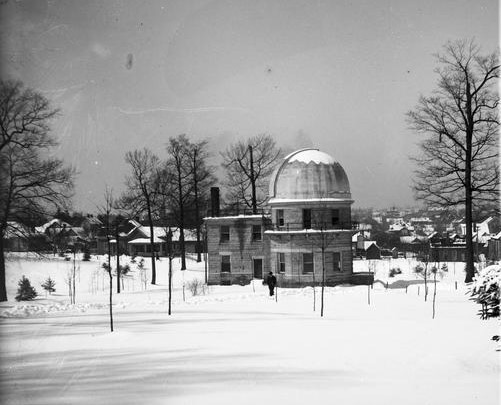Constructing the Observatory
The Kirkwood Observatory was constructed in 1900 and dedicated on May 15, 1901. The dedication address was given by the eminent astronomer William J. Hussey, a member of the staff of the Lick Observatory, Mount Hamilton, California. The title of his talk was: Astronomy in Modern Life. President Joseph Swain spoke about his teacher and mentor, Daniel Kirkwood.


 The College of Arts
The College of Arts